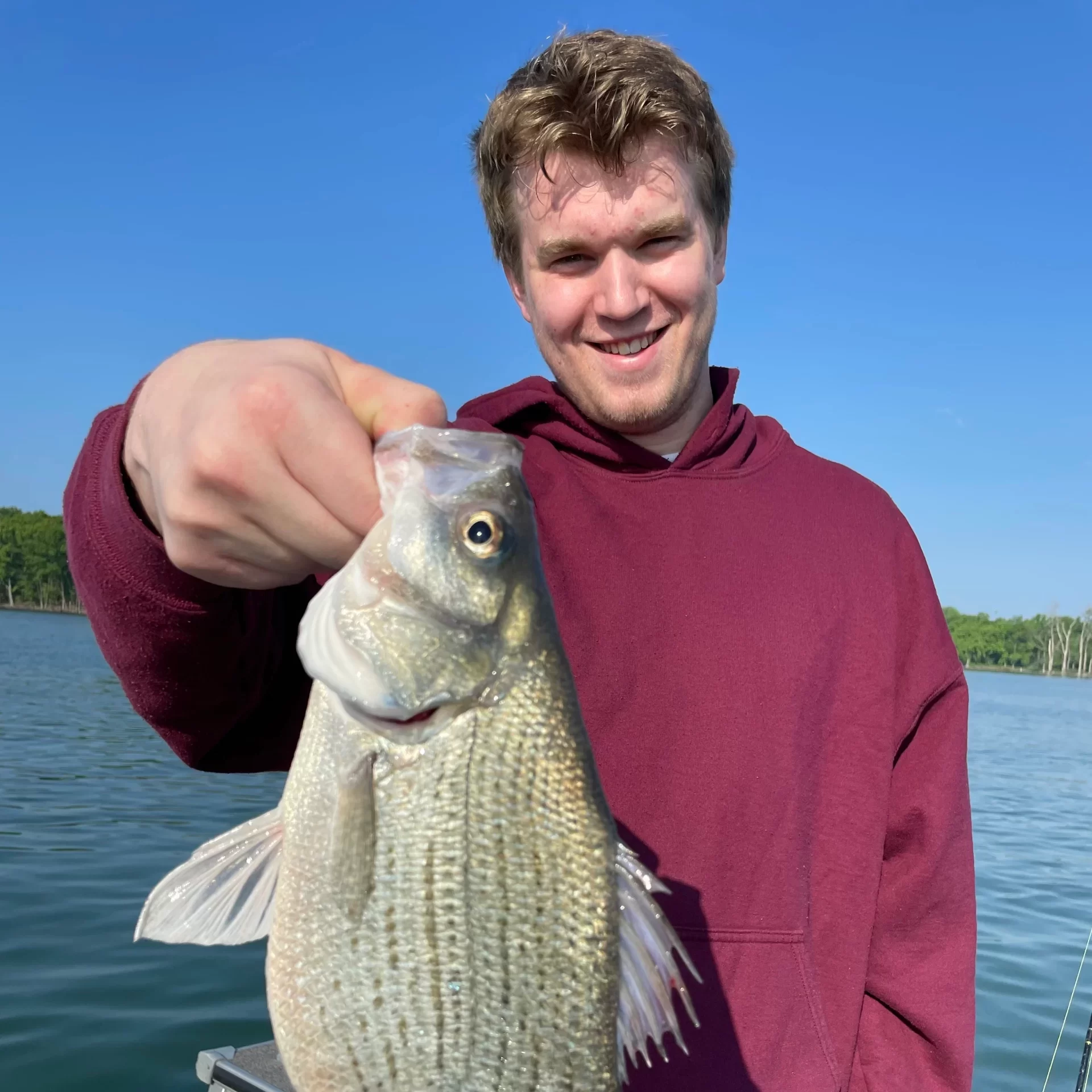How to Catch White Bass (Silver Bass) During the Spawn

* This page contains affiliate links. The Great Lakes Fisherman may earn a commission on items purchased through these links. For more on this, please click here.
Fishing can be relaxing and fun in many ways. I’ve had some of the most enjoyable days on the water when I’ve been skunked. But it’s hard to argue that some of the very best days fishing are those rare days when the fish are seemingly jumping in the boat. If you’ve never had a day like that, then it’s time to try fishing for white bass during the spawn.
White bass (also known as silver bass) can be a great species to target when introducing kids to fishing. They are aggressive feeders, hard fighters, and can be caught easily in great numbers during their spawning period in the spring. In this article, I’ll convey one easy way to catch these often overlooked fish.
Where & When to Go
When white bass spawn, they look for water that has a gravel/rocky bottom in water up to about 10′ deep. In my home waters of the Detroit River, when the walleye spawn is wrapping up, the white bass are just ramping up. Simply position yourself to where you can access this shallower water with a current and you are likely to find the bass.
The Bait
White bass are very aggressive this time of year and will hit nearly anything you throw at them. To maximize your catch, use something that you can get down in front of them and can be easily seen. Using the right color, as always, can increase your catch, so pay attention to the clarity of the water and select a color accordingly. White is always a productive choice. If the water is very clear, something flashy will also do the trick. A very productive combination is a white jig head with a white plastic body like this one. Live bait on a jig is also a great choice, albeit a bit messier.
A Productive Technique
A technique that we use is to cast your jig downstream into an area where you suspect fish to be. Let the jig sink to the bottom. If the current is swift enough, you may need to let out more line or even go to a heavier jig to get it down. Now just work the jig back an forth, swimming it near the bottom. If you get no hits after about 10 seconds, slowly retrieve it, and repeat. If after a few casts, you get no hits, it’s time to move.
Once you find these fish, you’ll often be able to load up on them. And although they are not as popular as other fish for table fare, removing the red strip of flesh from the fillet will remove a lot of the fishier taste, giving you a much more mild flavor.
